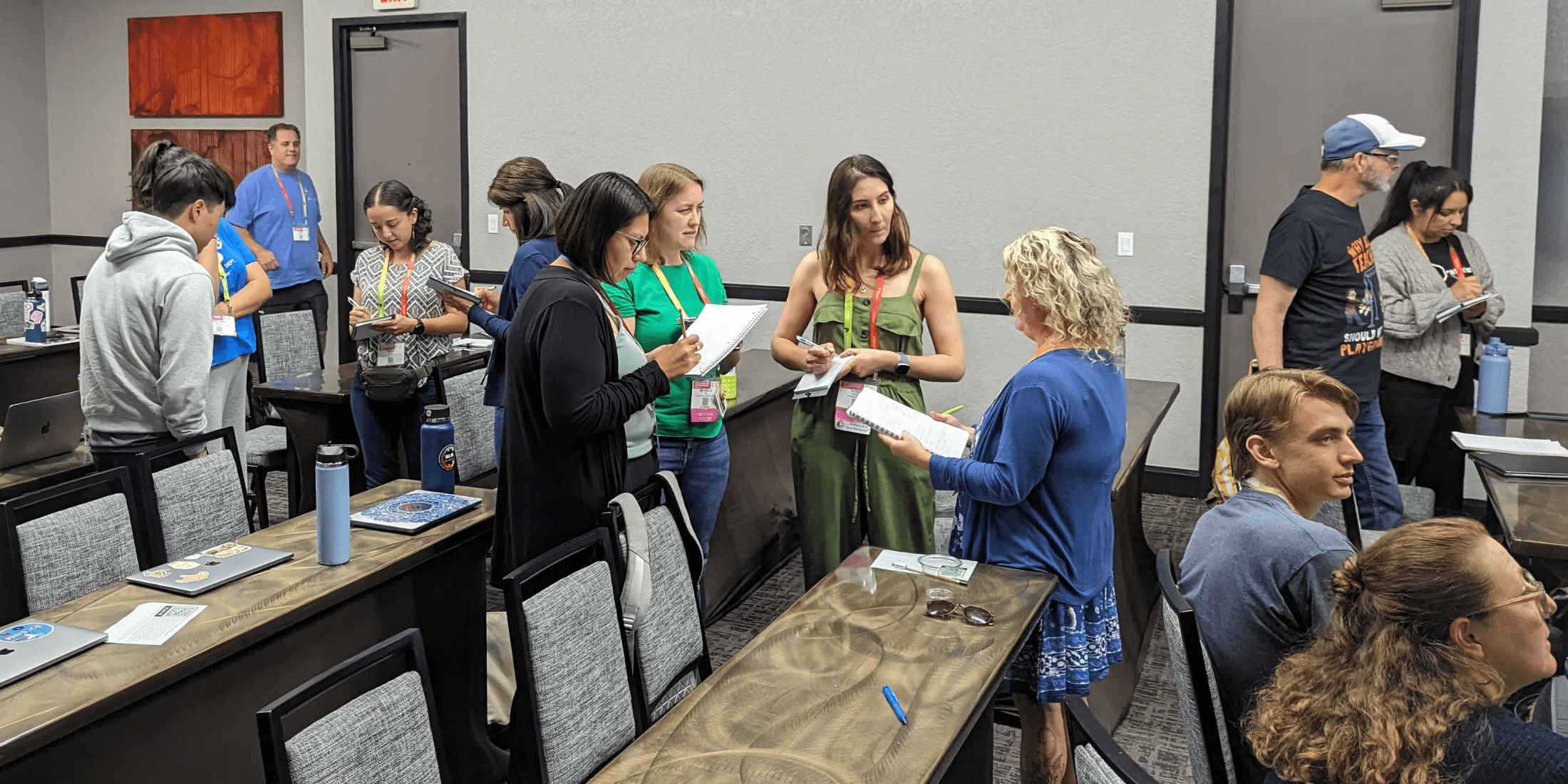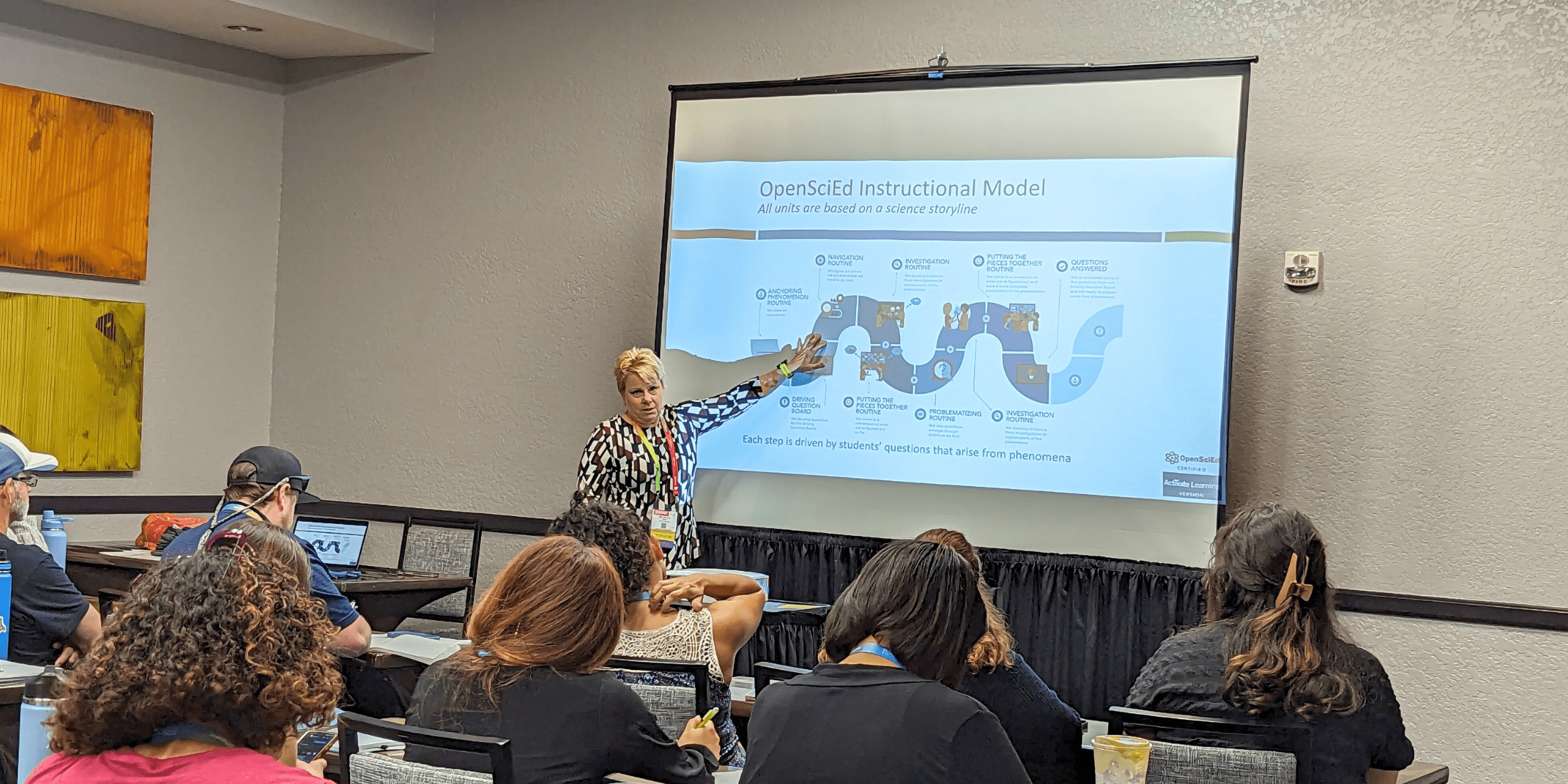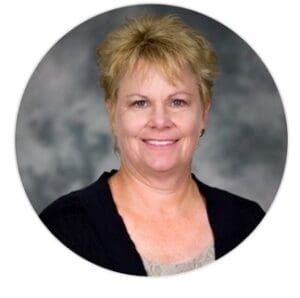Making the Shift to Three-Dimensional Teaching and Learning in Science Education
Making the Shift to Three-Dimensional Teaching and Learning in Science Education

Quick Take: As a follow up to our June 2024 Snapshot Series webinar, Professional Learning Facilitator Michelle Tindall provides an overview of three-dimensional learning in science education. What are the three dimensions in science? Why is three-dimensional learning in science important? And how do you start to make the shift to 3D teaching and learning? Explore these questions and more, and don't miss the next live interactive Snapshot Series webinar!
Three-Dimensional Teaching and Learning in Science Education
The start of school is just around the corner. Soon, we will welcome students back for another exciting year in science. With the school year approaching, teachers, instructional leaders, administrators, and countless others shift thoughts to instruction, assessment, collaboration, and engaging students in a curriculum steeped in rich learning experiences. Think of this series of blog articles as conversations that would happen during your team meetings, in the teacher’s lounge, or whenever a group of innovative educators get together. Over the next four months, we will take a look at three-dimensional teaching and learning from an instructional viewpoint, addressing a different topic each month.
And make sure to sign up for our free professional learning Snapshot Webinar Series Transforming Instruction and Assessment for High School Science and join the live sessions for interactive discussions and actionable strategies to bring to your science classroom!
What are the three dimensions in science?
The three dimensions are as follows; disciplinary core ideas, scientific & engineering practices, and crosscutting concepts, which are described in A Framework for K–12 Science Education and The Next Generation Science Standards, NGSS. While earlier versions of standards included the practices of science, the NGSS brought about a heightened emphasis on the scientific & engineering practices and crosscutting concepts by weaving them together with the disciplinary core ideas in a meaningful way.
High school educators are all too familiar with the content of science courses. The disciplinary core ideas of 3D instruction describe the key ideas in science, divided into areas of Life Science, Physical Science, and Earth & Space Science. Alongside the content of high school science courses, the practices of science, rooted in hand-on activities and investigations, have had a longstanding place in the science curriculum. While present, the idea of crosscutting concepts may not have been explicitly used or taught, but were part of the unspoken curriculum. This overview of the three dimensions gives a quick look at each dimension.
What is 3D learning in science and why is it important?
Three-dimensional teaching and learning weaves all three of these important components of scientific literacy together, to provide students with opportunities to learn key ideas of science while engaging in the practices of science; and to learn the practices of science while discovering the key ideas of science.
As educators, our goal is for students to apply the ideas and skills they learned in our class as they encounter problems and situations in their everyday lives, continuing for long after they leave our classroom. Outside the classroom, engaging in practices like asking questions, analyzing data, making a claim, and arguing from evidence are not done in isolation, but instead, are done within the context of figuring out something new, designing a solution, solving a problem, or making a decision. Similarly, new learning outside the classroom is not done in isolation from the practices of science. Thus, meaningful science instruction should emulate these real-life scenarios. Three-dimensional teaching sets the stage for instruction in the classroom to mirror experiences that students will face outside the classroom, providing them with authentic learning experiences.
How do you start to make the shift to three dimensional teaching and learning?
So, if we know that students will engage in all three dimensions in their everyday life, why not teach in a way that affords students the opportunity to engage in three-dimensional learning in our classrooms? The shift to three-dimensional, phenomenon-based instruction is a big change from a more traditional approach to high school instruction. If this shift feels unsettling, don’t worry as many educators initially felt as you do; however, they found the plethora of resources available to them supportive and enlightening, which enabled them to make the change. Schools are faced with incorporating standards that include all three dimensions into their curriculum and instruction, which is no small task.
There are many ways in which schools and districts have approached this challenge. Let’s take a look at just two ways to approach this work, selecting a curriculum that embeds three-dimensional learning into instruction and making small shifts within a school’s existing curriculum in order to weave in more practices and crosscutting concepts into learning.

Michelle Tindall Presents the OpenSciEd Instructional Model at the California Science Education Conference in 2023.
Resources to support three-dimensional learning in science
Until recently, rich, research-based curricula that are rooted in three-dimensional learning have been difficult to find. OpenSciEd, OSE, has developed such a curriculum for high school Biology, Chemistry, and Physics. Each OpenSciEd unit begins with a phenomenon and is written such that the storyline positions students to figure out key concepts of science through investigations, activities, and analysis of information as they learn more about the phenomenon.
We have all heard students ask why they are learning science and when they will ever use it after they finish school. The phenomenon selected for each OSE unit not only draws students in to the learning but it also provides crucial relevance to students. The storyline positions investigations, activities, and information in such a way that students figure out key science concepts in a coherent manner as they work collaboratively to figure out the phenomenon. This style of instruction puts students in the role of figuring out science instead of merely learning about science.
Additionally, this instructional style positions teachers in the role of facilitating student learning of science instead of simply telling students about science.
Teachers without the opportunity to switch to a new curriculum can still incorporate three-dimensional learning into their instruction. Teachers can make small shifts that put the students at the center of the learning. These shifts include:
- Start a unit or a group of a few lessons with a phenomenon or something that students can’t figure out yet.
- Reposition science investigations before content-area learning in order to give students an opportunity to analyze information, develop models and engage in sensemaking.
- Let students uncover key ideas of science as they make claims based upon the evidence collected during investigations and activities.
- Nurture a collaborative learning community in the classroom where students work together to develop models, solve problems, figure out key ideas, and propose design solutions.
These instructional changes, whether done as part of a new curriculum adoption or with small changes to current curriculum, engage students in learning and provide them with valuable skills that will serve them well beyond their time in high school.
The next webinar in this Snapshot Series will continue the journey into three-dimensional teaching and introduce instructional tools that promote productive discussions. These discussions are essential for students as they work to make sense of investigations and begin to figure out key ideas of science. Register for the free webinar to join us for the live interactive discussion!
About Michelle Tindall 
Michelle Tindall is a professional educator whose career focused primarily on teaching high school science and mathematics and facilitating professional learning in science, mathematics, and technology integration for over twenty years. She has been a science education consultant and university instructor, in the area of teacher preparation, since 2021. Formerly, she was a K-12 Math/Science Curriculum Coordinator and Secondary Curriculum Technology Integrator.
Michelle has promoted three-dimensional teaching and learning, student-centered instruction, and STEM education in her roles as a facilitator for OpenSciEd, Modeling Instruction, and NGSX. Michelle earned a B.A. in Chemistry and a M.A. in Secondary Education at Wayne State University.
* * * * * *




